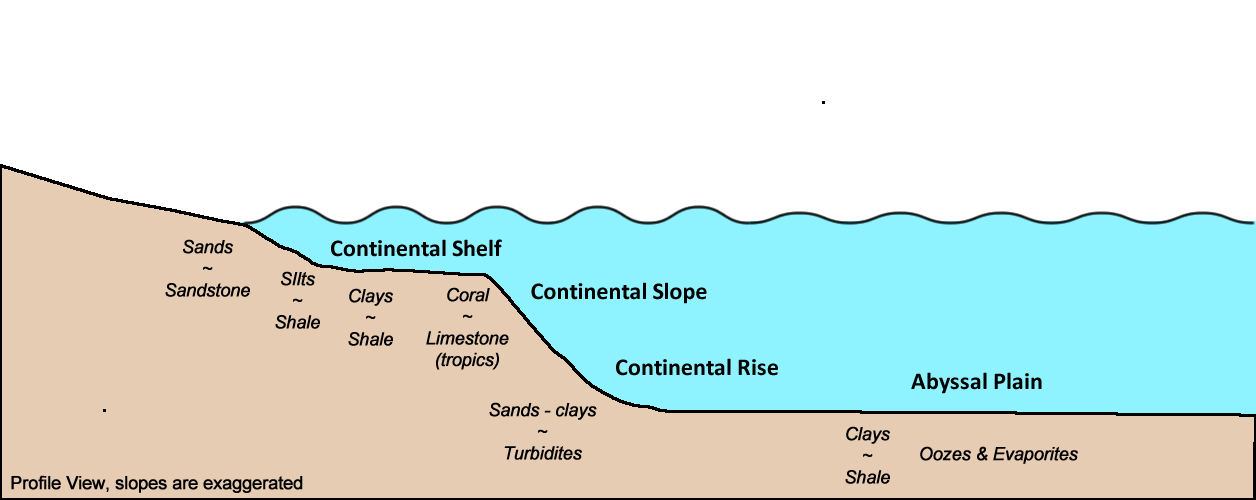Step 1: Diagenesis - Deposition
Sedimentary Depositional Environments
A sedimentary depositional environment is a geographic setting where sediment is accumulating The depositional environment determines the nature of the sediments that accumulate (grain size, grain shape, etc.). Sediments are deposited due to a reduction in energy levels of the medium transporting them.
In non-marine sedimentary environments, the erosion & deposition of sediments is associated with rivers, lakes, deserts,wind (eolian), glaciers. Sediments deposited in these areas form mostly detrital or clastic sedimentary rocks such as sandstones, siltstones, breccias and conglomerates.
Transitional sedimentary environments lie inbetween marine and non-marine settings. Deposition of sediments typically is associated with rivers entering the marine environment, such as tidal flats, lagoons, estuaries, and deltas. Sedimentary rock types associated with these environments include mostly detrital or clastic sedimentary rocks. Higher energy environments like the shoreline will deposit sands, while muds and clays will be deposited in quiet waters such as lagoons.
Marine sedimentary environments are all found in the ocean. Sediments accumulate rapidly on continental margin (neritic) and slowly in the deep ocean (pelagic). Since there is very little erosion that occurs in the ocean, these sediments provide a good record of ocean and global history. The type of sedimentary rock that forms is dependant upon the type of sediment deposited. Detrital/clastic rocks include clays and silts, while chemical rocks include limestone and chert. A semi-predictable sequence of sediments/rocks form as one travels from the coastline out to the open ocean: sands near shore, silts a bit further out, followed by carbonate rocks, then muds in the deep ocean.
Marine Transgressions and Regressions
Sea level is constantly changing. This can be due to numerous reasons: global warming or cooling, tectonic activity, fault activity, etc. When sea level rises with respect to the land it floods the coastline, forming a marine transgression. As sea level falls with respect to the land it is called a marine regression. The sequence of sediments described above moves inland with marine transgressions, and the moves back towards the ocean with a marine regression. In some areas this has happened numerous times, forming a vertical sequence of bedding that zig-zags back in forth as the sediments move with the coastine.



